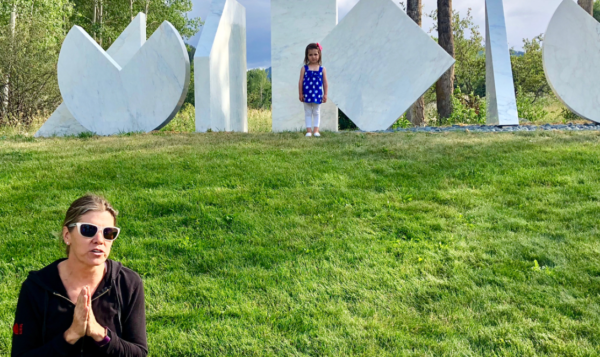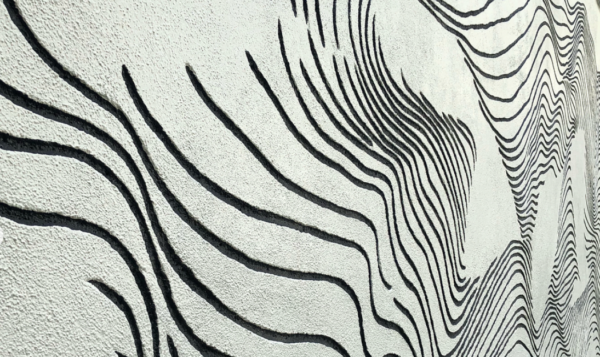During his life, Walter Paepcke, founder of the Aspen Institute and Aspen Skiing Company, dreamed of this town becoming a Rocky Mountain hub of arts and culture known throughout the United States. He’d be thrilled to see his vision fully realized today, as Aspen has become synonymous with arts, entertainment and expression not commonly seen in other ski and resort-based towns.
Whether it be a result of our long-established galleries or recently-opened museums, Aspen has cemented itself as a travel destination, rich with attractions and activities, for artists and art enthusiasts alike.
To celebrate the arts scene and give guidance and perspective to art-minded visitors, we’ve interviewed Lissa Ballinger, creator of the Walnut 5 art advisory.
 Lissa has worked in the art world for 20 years in both the for-profit and non-profit arenas. She has worked for museums and art galleries, as well as with private collectors and art consultants. She obtained her Masters of Art Administration from Columbia University in 2002 then in 2014, she completed the coursework with the American Society of Appraisers through the University of Chicago. Ballinger began her art advisory business in 2010 and serves as the Curator of the Aspen Institute’s art collection and galleries.
Lissa has worked in the art world for 20 years in both the for-profit and non-profit arenas. She has worked for museums and art galleries, as well as with private collectors and art consultants. She obtained her Masters of Art Administration from Columbia University in 2002 then in 2014, she completed the coursework with the American Society of Appraisers through the University of Chicago. Ballinger began her art advisory business in 2010 and serves as the Curator of the Aspen Institute’s art collection and galleries.
Our Artist’s Tour of Aspen interview is featured below and portions have been redacted for brevity.
TLN: For starters, can you share recommendations for essential galleries or activities for the art-inspired visitor of Aspen?
LB: Art galleries to visit: Boesky West, Skye Gallery, Gallerie Max, Maker & Place (not just a gallery, but great functional art inside) and Harvey Meadows should not be missed. Definitely go on one of the two weekly tours at the Aspen Art Museum. They are free and inevitably will make you feel more at home with conceptual contemporary art. Also, the free art and walking tours at the Aspen Institute will give you a brief history of Aspen and will make you feel welcome at the Institute.
TLN: What can a visiting artist expect in Aspen? Will they find a collaborative, supportive community? Are public installations commissioned with ease and routinely rotated?
LB: An artist visiting Aspen will discover a cultural scene that rivals most major cities in the world. There is something for everyone — visual artists, musicians, film-goers, thespians and dancers. From what I can glean about the art-making community, it is a struggle to survive in Aspen because of the price of real estate, and the cost of living here can be prohibitive. However, there are several interesting collaborative artist work spaces, such as the Red Brick Arts Center in Aspen. There’s also the Studio For Arts + Works (S.A.W.) in the town of Carbondale, which also has a vibrant public art program.
TLN: Where to find inspiration in Aspen? Any top public spaces to fuel creativity and inspiration?
LB: The Campus of the Aspen Institute, designed by Bauhaus master, Herbert Bayer from 1953-1973, is a unified environment. A place where the spirit can be moved by Aspen’s natural setting, the mind can thrive, and art can serve both aesthetic and functional purposes. The Bauhaus school taught that environment, culture, and community should not merely exist alongside each other, but, in the ideal setting, these aspects should be integrated and intertwined.
TLN: What may surprise visitors about Aspen?
LB: Aspen changes every year— restaurants close, stores open, real estate offices merge — things evolve. But what does not change is the genuine spirit of the people who live here.
TLN: Is there a local artist’s supply store to purchase material when creativity strikes?
LB: Anderson Ranch has a gift shop with great art supplies. I would say most artists shop online these days, though Carl’s Pharmacy also has some offerings.
TLN: Hunter S. Thompson left a lasting legacy in Aspen, but are there any other well-known artists you suggest visitors should be familiar with and why?
LB: Herbert Bayer! He was a student, and then a master teacher of the Bauhaus from 1921-1928. Bayer emigrated to the United States in 1938, and then was invited by Walter and Elizabeth Paepcke to move to Aspen in 1946 with his wife, Joella. They stayed until 1975. The vestiges of the Bauhaus legacy in Aspen are manifold, transforming a once-bustling Victorian Era silver boom town into a place that accepted modern architecture and contemporary thought. While his imprint is most visible in the design of the Aspen Institute from 1953-1973, Bayer also had a major impact on the growth and development of the entire town of Aspen. In 1946, he designed and built the original Sundeck warming hut atop Aspen Mountain; he orchestrated the first and second renovations of the Historic Wheeler Opera House; he renovated the Hotel Jerome, and built several other homes in town. Arguably Bayer’s greatest achievement is the campus complex of the Aspen Institute, which was designed as a total environment in which art is integrated into all aspects of work, life and recreation. Bayer was also dedicated to the deliberate growth of Aspen, and still, to this day, his ideas dictate many of the historic preservation measures that have helped to protect the City from unabashed growth and expansion.
TLN: Lastly, what is your favorite piece of art in Aspen and why?
LB: The Sgraffito Wall mural on the campus of the Aspen Institute (shown below). It was made by Herbert Bayer in 1953, using a technique Bayer learned from Wassily Kandinsky while he was a student at the Bauhaus. This outdoor mural (located on the south side of the Koch Building) shows Bayer’s fascination with the shifts and undulations of the earth’s surface. It is reminiscent of a topographic map with distinct contours which remind the viewer of the innate sensation of motion in the mountains.
 To immerse yourself in Aspen’s art scene and to learn more about our community, visit The Little Nell. Our hotel design pays tribute to both Aspen’s lively and cultural scene, as well as its dynamic history as a charming silver mining town.
To immerse yourself in Aspen’s art scene and to learn more about our community, visit The Little Nell. Our hotel design pays tribute to both Aspen’s lively and cultural scene, as well as its dynamic history as a charming silver mining town.
